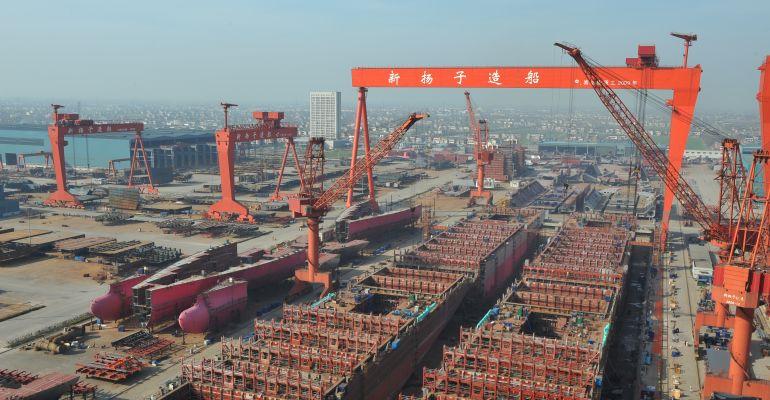Container shipping is enjoying a boom brought about by soaring demand for goods from consumers during the Covid pandemic combining with port and supply chain ineffiencies. As a result of these temporary market factors, lines are seeing a huge surge in rates and profitability.
Simon Heaney, Senior Manager Container Research for Drewry, told a webinar that terminal efficiency was not expected to normalise this year. Combined with container line discipline in managing capacity substantially higher freight rates are forecast for 2022 and 2023.
Drewry predicts that all global freight rates – spot and contract – will increase 23% in 2021. This average increase includes backhaul and regional rates.
Looking to the following year Heaney said, “For 2022 we do see some erosion, we think carriers are going to still be able to keep freight rates highly profitable.” The analyst forecast a 9% fall in freight rates in 2022 from the highs of 2021.
However, looking beyond 2022 the potential fly in the ointment for container shipping is the huge surge in newbuilding orders that is being seen this year.
“Carriers, and it should be said non-operating owners too, are potentially sowing the seeds that will shorten their bull run they’re enjoying right now by over-investing in new tonnage. With freight rates soaring as they are its understandable owners are scrambling for as many containerships that they can get their hands on,” Heaney said.
The 170 vessels with a combined capacity of 1.8m teu ordered in Q1 already exceeded the entire orderbook placed in 2020.
“Since the start of the second quarter we’ve seen more big orders come in from CMA CGM, and we’re expecting more, Cosco potentially and others. The level of contracting we are seeing is on course to set new annual records surpassing 2007 when there was around 2.7m teu ordered, and more recent high of 2.25m teu in 2015,” he said
Of the new capacity ordered in Q1 some 1.1m teu is scheduled to be delivered in 2023, on top of capacity already slated for delivery that year, creating concerns for the impact on the market in terms of demand and supply.
“I don’t understand why owners are so desperate to acquire new ships that are going to take a least two years to be delivered,” Heaney said.
“They are [the newbuildings] not going to arrive in time to cash in on this boom time, and in my mind all they’re really doing is potentially increasing the risk of overcapacity returning to the market after a few good years of repairing the situation.”
Copyright © 2024. All rights reserved. Seatrade, a trading name of Informa Markets (UK) Limited.
Add Seatrade Maritime News to your Google News feed.  |

